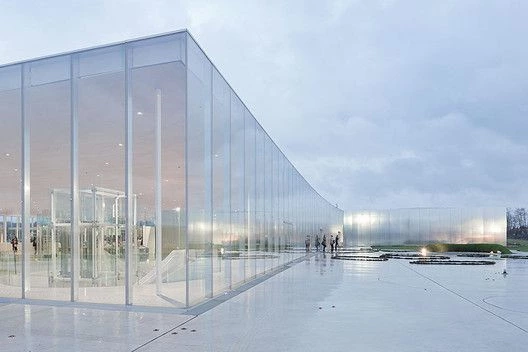Comparison Of Ultra-clear Glass In Architecture
Introduction:
With the advancement of technology and the continuous development of architectural design concepts, ultra-clear glass, as a high-quality and highly transparent glass material, has received wide attention and application in architectural design and application. This article will explore the differences between ultra-clear glass and traditional glass materials, and focus on the advantages and characteristics of ultra-clear glass in architectural design and application.

I. Differences between Ultra-Clear Glass and Traditional Glass Materials
Transparency and Visual Effects:
Ultra-clear glass has a transmittance of over 91.5%, much higher than traditional glass materials. This allows it to provide better daylighting effects and create brighter and more spacious indoor environments. In contrast, traditional glass materials may have lower transmittance, which could result in insufficient or dim lighting indoors.
Appearance: Ultra-clear glass has a crystal-clear appearance that provides a sophisticated and modern architectural exterior. Traditional glass materials may contain impurities or colors, resulting in a relatively inferior appearance.
Safety: The tempered treatment of ultra-clear glass gives it higher safety. When shattered, it breaks into small granular fragments, reducing the risk of injury to humans. Traditional glass, on the other hand, forms sharp shards when broken, making it more prone to cutting injuries.
Environmental Friendliness: Ultra-clear glass has a lower iron content in its raw materials, making it more environmentally friendly in terms of recycling and reusability. Traditional glass materials may contain higher levels of iron, reducing the efficiency of recycling.
II. Advantages and Characteristics of Ultra-Clear Glass in Architectural Design and Application

Facade Design: Ultra-clear glass is commonly used to achieve lightweight and transparent architectural exteriors. It can provide high-quality light transmission and visual effects, creating a modern and upscale appearance for buildings.
Skylight Design: Ultra-clear glass is often chosen as the main material for skylights in public buildings such as museums and airports. Its high transmittance and excellent light efficiency can reduce UV transmittance, minimizing the risk of fading and aging of indoor items.
Commercial Building Applications: Ultra-clear glass is widely used in commercial buildings such as hotels and office buildings. It provides a good panoramic view for the interior, breaking space limitations and creating a more integrated indoor and outdoor environment.
Safety and Reliability: Ultra-clear glass, with its tempered treatment, has high mechanical and physical properties. It can withstand high pressure and impact, ensuring safety and reliability in building applications.
Sustainability: As a sustainable material, ultra-clear glass can be combined with other sustainable design elements such as solar energy, green roofs, and rainwater collection systems. It contributes to achieving more environmentally friendly and energy-efficient goals in architecture.

Conclusion: Ultra-clear glass, as a high-quality and multifunctional glass material, has significant advantages in architectural design and application. Compared to traditional glass materials, ultra-clear glass demonstrates obvious advantages in terms of transparency, visual effects, safety, and environmental friendliness. In architectural design, ultra-clear glass can provide better light transmission and visual effects, creating a modern and upscale appearance for buildings. In the future, with further technological advancements, the application prospects of ultra-clear glass will be broader, and it is expected to play a greater role in the field of architecture.
Please feel free to contact Guangdong Xinlian Glass Technology., Ltd. for more details about the product.
E-mail: kateliang92@dingtalk.com
WhatsApp/wechat: +8618826407102


